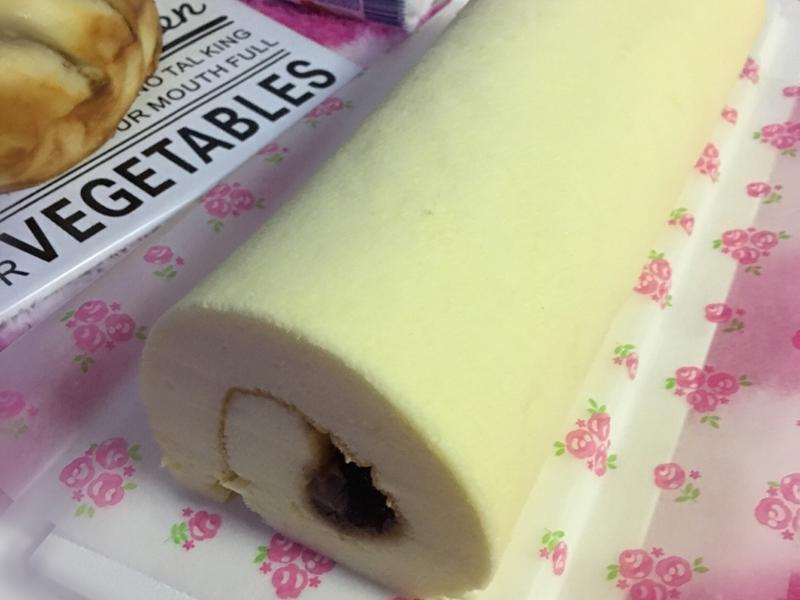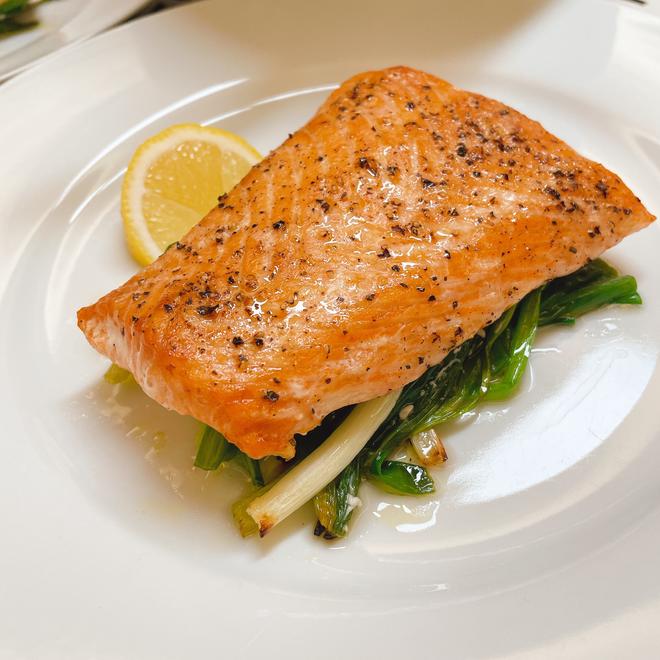"Golden Teardrops" only have the most common ingredients and the most simple methods. The taste of my mother's Sunday cake in my memory has accompanied generation after generation through good or difficult days, and it is still a favorite of many Germans.
The following recipe is for a 6-inch mold (15 cm in diameter). In the picture, I used a 10-inch mold (26 cm in diameter). See the tips for the specific amount of a 10-inch mold.
Ingredients
[Cake base - 6-inch mold] ~~~~~~~
Flour 70g
Butter 30g
White sugar 20g
Egg 1
Baking powder 1/2 teaspoon
Salt 1 pinch with fingers
[Cheese layer] ~~~~~~~
Cream cheese 250g
Milk 100ml
Ordinary vegetable oil (flavorless) 15g
Egg yolk 2 eggs (egg white for snow mountain layer)
White sugar 40g
Pudding powder or corn starch 20g
[Snow mountain meringue] ~~~~~~~
Egg white 2 eggs
White sugar 45g
Snow Mountain Golden Tears·Cheese Cheese Cake·German century-old classic method
[Prepare the cake base first] 70g flour, 30g butter, 30g white sugar, 1 egg, half a teaspoon baking powder, a pinch of salt. Cut the butter into small pieces and soften it at room temperature without heating it into liquid. Beat an egg into a whole egg liquid (take 20 grams first, add as needed, and use the rest for the cheese layer).
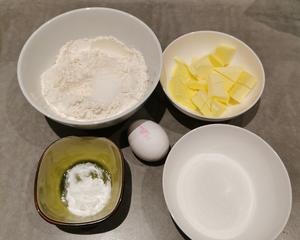
Mix flour, sugar, salt and baking powder, add 20 grams of whole egg liquid, knead with your fingers into flocs, then add softened butter and knead into a moist, soft but non-sticky dough. If you feel the dough is a bit dry, you can add a little more whole egg liquid. When adding, be careful to pour only a little at a time. In the picture, I used a chef machine. In fact, according to the 6-inch recipe, it is completely unnecessary. It is easy to knead directly and quickly.
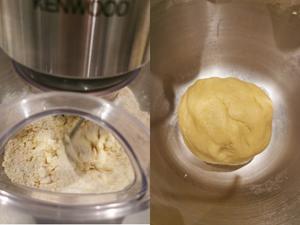
There are two ways to prepare the mold. 1. Brush a layer of oil on the bottom and inside of the mold, then grab some flour and sprinkle it in, shake + turn the mold, and cover it with flour. 2. Spread baking paper directly. When I made it myself, I prepared the materials according to the 10-inch mold, so I used a large 9-inch mold and brought it to the office to share, and the small 4-inch mold was left for my husband.
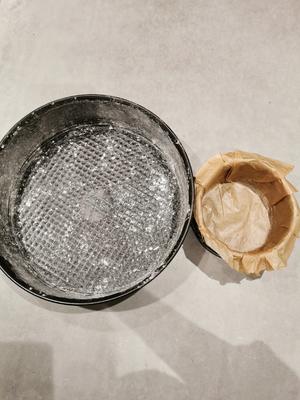
Put the dough in the mold and press it into a thin sheet, with the edge about 4 cm high (the mold is 7 cm high). You can use a silicone scraper to slightly tidy up the edge. I pressed it with my hands, or you can use the bottom of a cup. Because the dough is very soft, it is very easy. Then put it in the refrigerator. Next, prepare the cheese layer.
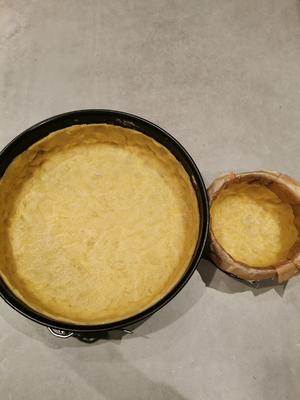
[Prepare the cheese layer now] (The amount in the picture is large, just follow the amount given)
1) Preheat the oven to 180 degrees.
2) 250 grams of cream cheese, 100 grams of milk, 15 grams of ordinary unflavored vegetable oil, 2 eggs, 40 grams of white sugar, 20 grams of pudding powder or corn starch.
3) Separate the yolk and egg white of 2 eggs. Put the egg white in the refrigerator first.
4) If there is no pudding powder, you can use an equal amount of corn starch instead.

Add 2 egg yolks to the unused egg liquid from the previous cake base (use as much as you have left), add sugar, and beat with a whisk at high speed into a light yellow paste (don't try to lift the whisk to make an 8 without it disappearing). This step can also be omitted. Mix all the ingredients and go directly to step 7. The purpose of beating the egg yolk is to fill it with air, which will make the cheese layer fuller and the cheese layer more gentle when baked.
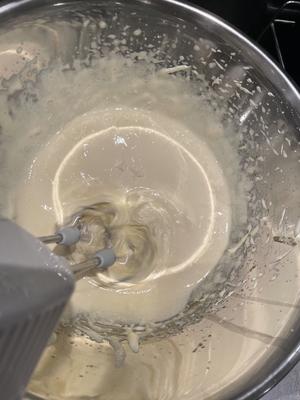
Add all other ingredients and stir evenly into a paste. If the egg yolk is beaten, the milk paste will be larger than the unbeaten one.

(I forgot to take a photo of this step, so I can only post a photo of the finished product.) Take out the cake base from the refrigerator, pour in the cheese paste, don't fill it up, leave 2-3 cm (the cheese will grow taller during the baking process). Then put it in the lower third of the middle layer of the preheated oven, 180 degrees for the upper and lower fire, and bake for about 60 minutes. Pay attention to the last few minutes, each oven is different, don't bake it (basically it won't be burnt).
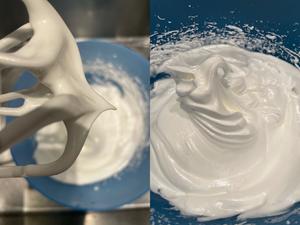
[Prepare the meringue] When the baking time reaches 50-55 minutes, you can prepare the meringue. Take out the egg white from the refrigerator, pour in 45 grams of white sugar, and beat with a whisk at high speed until the meringue is shiny (hard whipping). Of course, you can add white sugar in three times according to the standard egg white whipping method.
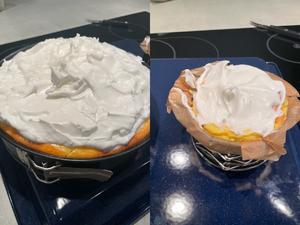
Take the cake out of the oven and spread the meringue on the cheese layer. Don't try to smooth it out. Just spread it randomly, high and low like a hill.

Put it in the oven and continue to bake at 180 degrees for 10-15 minutes. Pay attention to the color of the surface. The whole surface is light brown. The picture shows the state of baking for 5 minutes.
After baking, turn off the oven, open the oven door to leave a gap, and let the cake stay in the oven for 10-15 minutes.

Then take out the cake and let it cool. There is no need to remove it from the mold at this time.
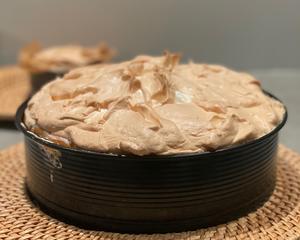
When the cake is still warm, cover it loosely with tin foil, don’t seal it tightly. Use a toothpick to poke a few small holes in the tin foil, not too many. The purpose of this step is that the meringue will slowly ooze out caramel in a humid environment during the cooling process. To increase the moisture, you can add fruits to the cheese layer, such as oranges, mangoes, berries, etc. I am recreating my mother-in-law’s recipe here, so I didn’t add any fruits. If you add fruits, you don’t need to cover it with tin foil, and caramel beads will ooze out during the cooling process. After cooling, you can put it in the refrigerator to refrigerate before eating, and the taste will be better. I baked it after I got home from work in the evening. It was already very late after baking. When it was still warm, I covered it with tin foil and went to bed.
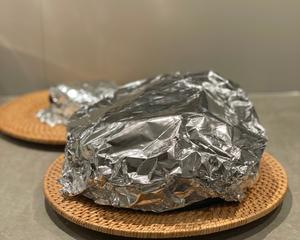
The next morning, with excitement, I uncovered the tin foil. Da~~Da~~ Highlight moment! I saw the golden tears oozing out!!
Another detailed picture. Crystal clear, the golden tears of the snow-capped mountains.

It is easy to remove from the mold at this time. Take the large cake to the office.
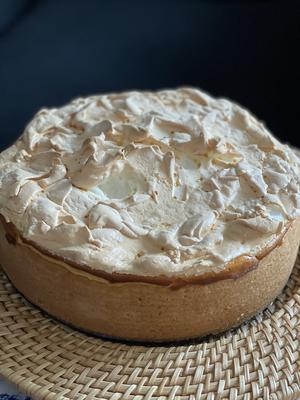
The cake base is crispy and delicious, the cheese layer is smooth and soft, and the snow-capped mountain layer melts in your mouth. The three flavors and three textures meet harmoniously on the tip of your tongue
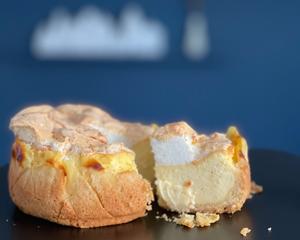
Tips
1. Because the cake needs a certain amount of time to cool, you can prepare it one day in advance, put it in the refrigerator at night, and eat it the next day.
Of course, if you make it in the morning, you can eat it in the afternoon.
2. In the cheese layer, you can add half a lemon peel (scraped finely), a few drops of lemon juice, or add your favorite fruits, mango, durian, berries, etc. According to the fruits you put, you can adjust the amount of sugar in the cheese layer appropriately.
3. The amount shared here is the amount of 6-inch mold. The amount of 10-inch mold (diameter 26 cm) is as follows. At the party, let this golden tear bring a century-old classic experience:
a) Cake base: 200 grams of flour, 60 grams of sugar, 95 grams of butter, one egg (use all the egg liquid), one teaspoon of baking powder, a pinch of salt.
b) Cheese layer: 140g sugar, 4 eggs (only egg yolks, egg whites for the snow mountain layer), 1000g cream cheese, 400ml milk, 50g unflavored vegetable oil, 2 bags of pudding powder totaling 72g (or 60g corn starch).
c) Snow mountain layer: 4 egg whites, 95g sugar.
(Images from the internet)

